Submitted by WA Contents
CUN Design converts old factory into a new beauty shop in an industrial site of Beijing
China Architecture News - Dec 06, 2017 - 04:36 34196 views
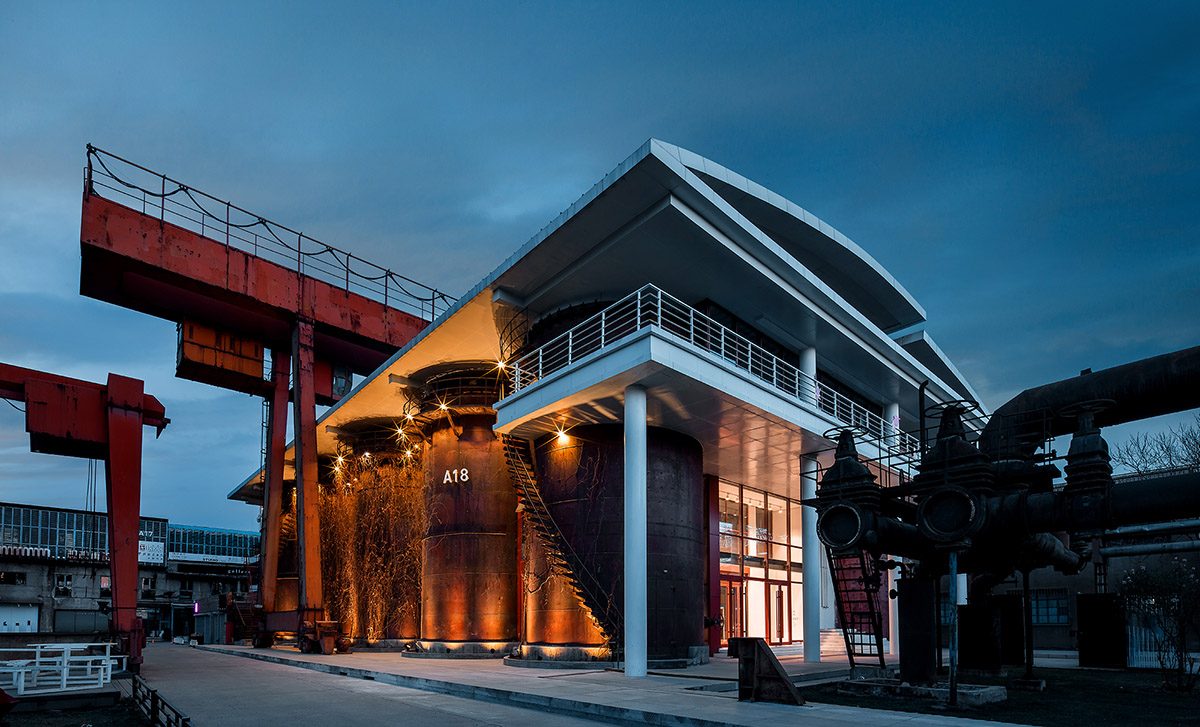
Chinese design firm CUN Design has completed a new beauty shop by using the relics of the existing factory in an industrial site of Beijing in China. Named 751 Fashion Buyer Shop, the highly-industrial-looking building is located in the JiuXianQiao island - which is known as as 'holy island' for old factories.
Situated in the heart of the fashion design square of 751 D-Park Beijing, which is one of the landmarks in the locomotive square, the studio designed this fashion shop by setting on the footprints of industrial relics of this area.
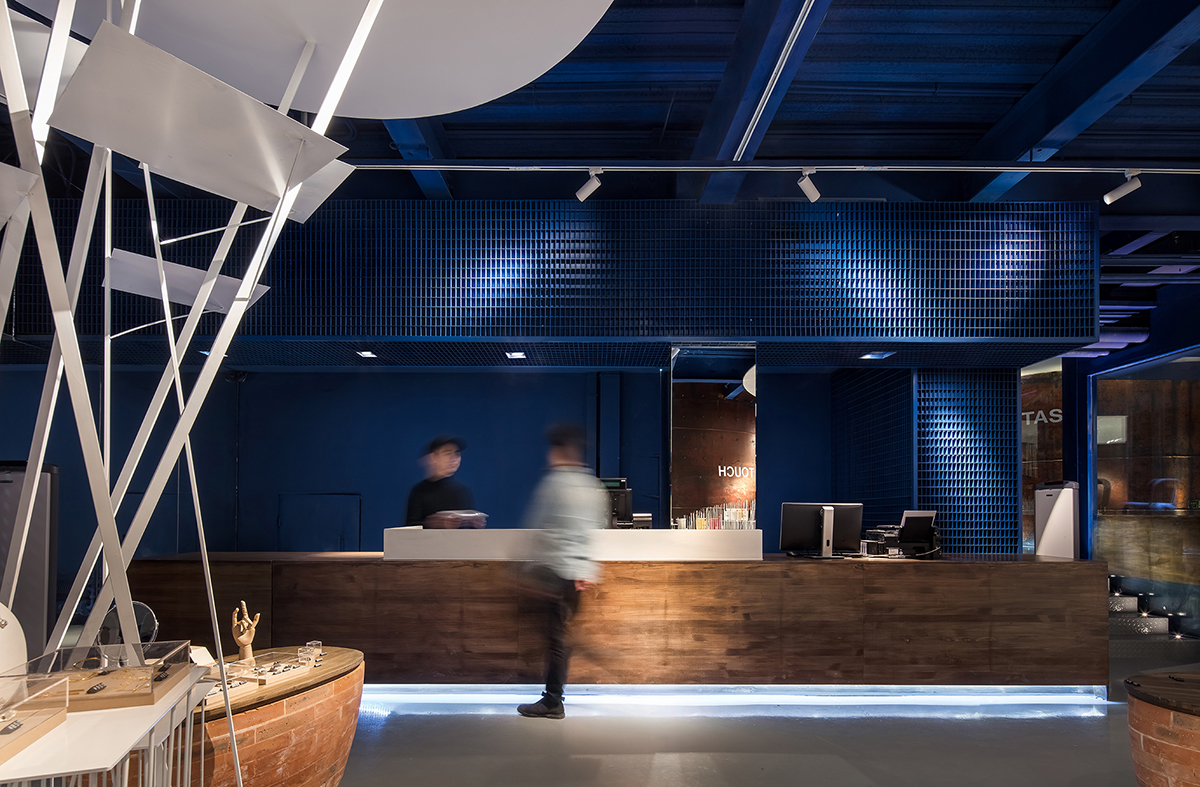
"People agree that the urbanization nowadays is largely a byproduct of industrialization. In the past, you cannot imagine that how to call a city without any factories."
"The situation changed by last few years, traditional cities started a wave of 'industrialization': Keeping away from the pollution and the roar of the machine, people cheers by the gradually dropped out factories."
"The capacity of those factories left, construction stayed, so the following problem came, how to make a better way that can change those huge areas instead of the demolition, this is also a history remained problem that our society is facing to," said the firm.
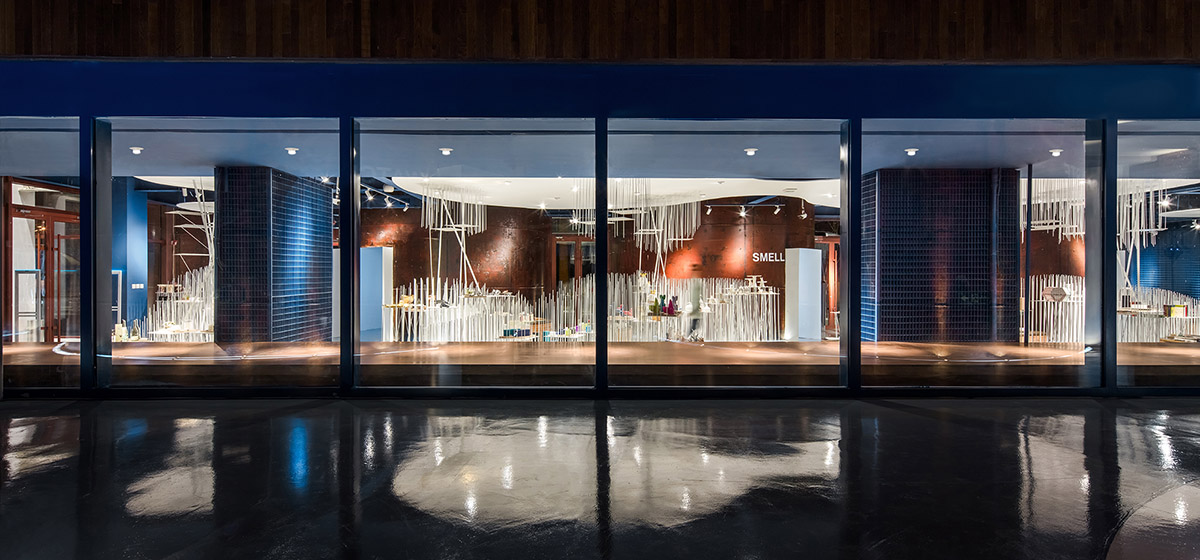
"This unique field has become an important area to show and release brands from different countries, as well as a core area to the Beijing International Design Week. The functions of this area covered by exhibitions, forum release, cultural exchange and spatial aesthetics," said CUN Design.
"When we know that this space would be a designer brand boutique in the future for commercial purpose, it is presented a business mode by the buyer shop which advocate lifestyle that is affecting our consumers group around us," added the firm.
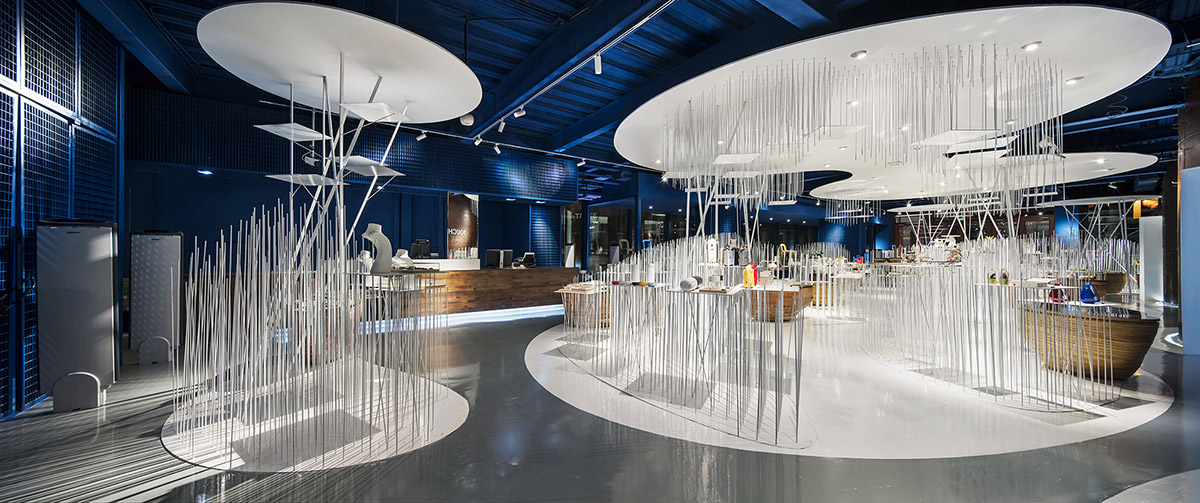
"Fashion buyers would help if the designers get too self-centered, they will bring new market demands to the designers. Fashion has to be a business eventually, what fashion buyers need is the combination of fashion and business."
"More and more spaces like this have been created as a cool place, but ignored its own temperature demanding, mentioned the how original cold industrial atmosphere it is, which does not the business desire of consumers. So we set up three main lines in the space to connect the entire design," explained the architects.
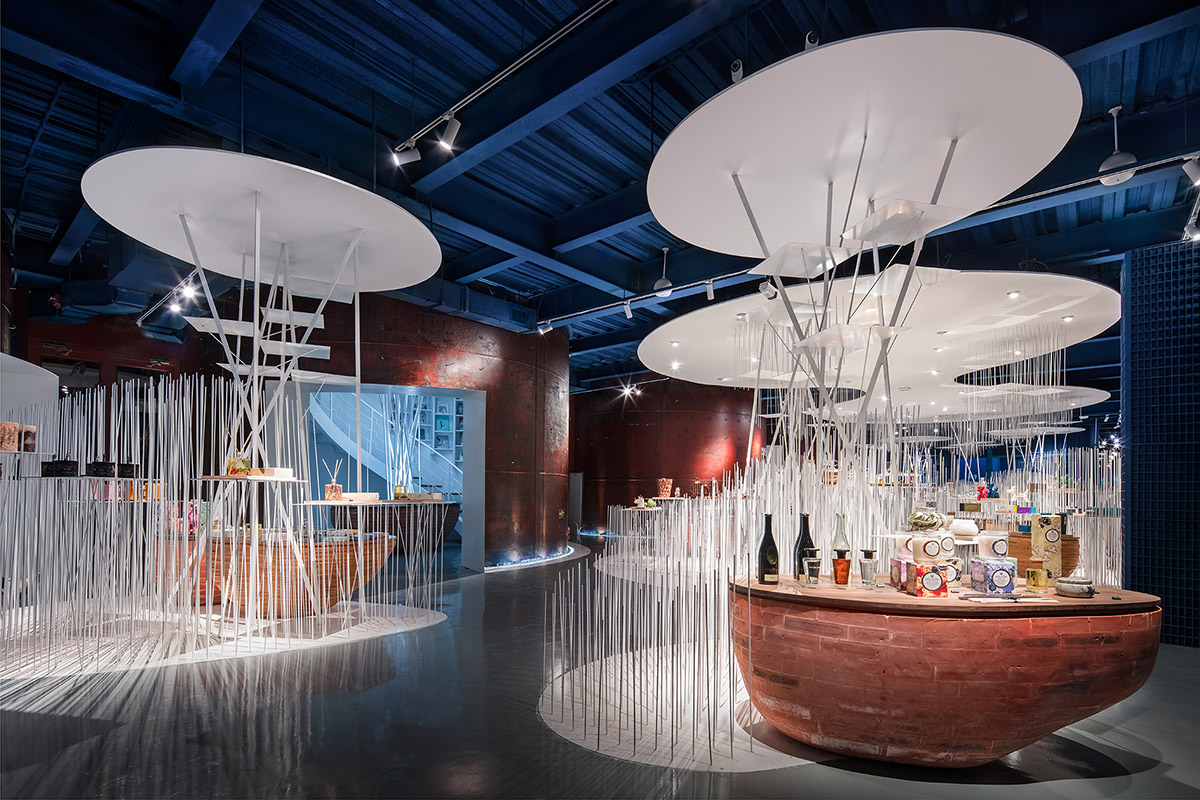
The studio offered a design which has a strong purpose, for the architects, even the essence of the design was aimed to create the value of business, and close to the level of space in people’s life, make the improvement and perfect. CUN Design used a series of furnishings remaining from the last Beijing international design week, designed by ODD studio from Japan.
"But these furnishings were more suitable for small-scale display. They were not the type of our commercial purpose of the space, in order to maximize the significance of its function, using them more efficiently has become the direction of our thinking," added the studio.
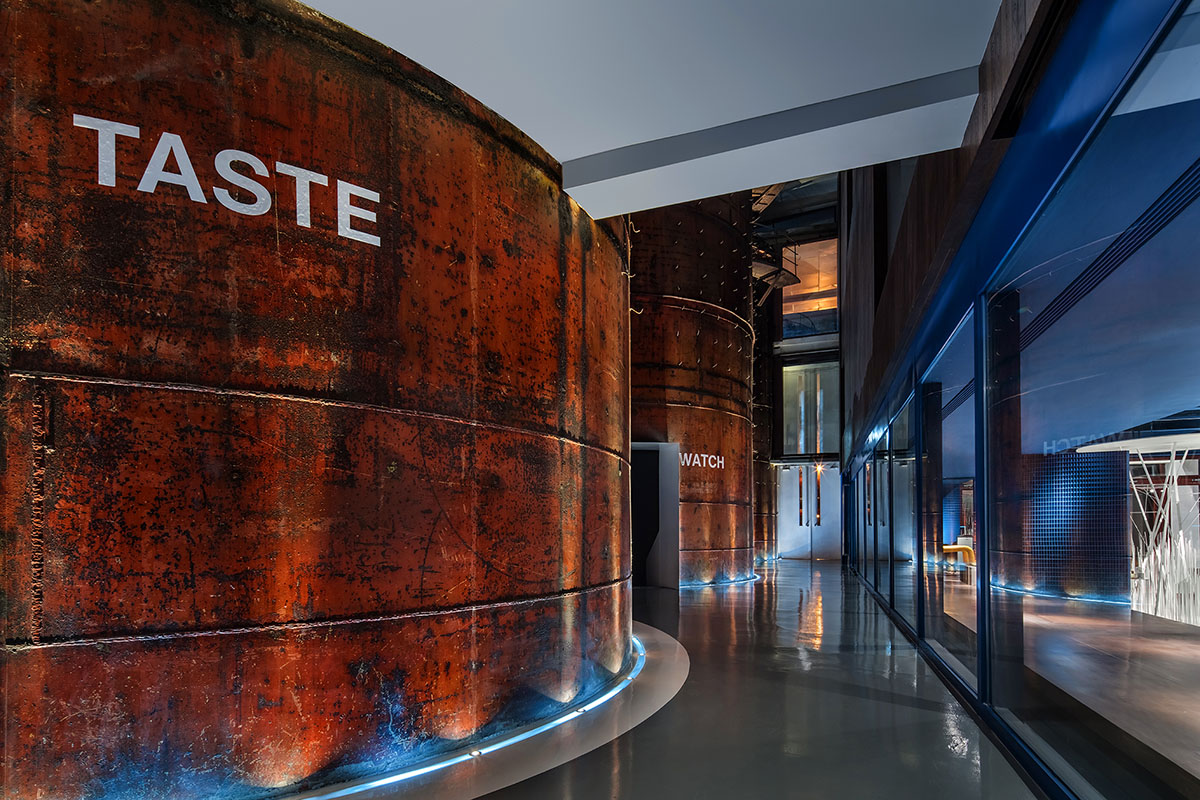
"According to the statistics, the rate of the original device is only 600, facing the huge product category demand from designers by latter part, functions are far from enough."
"So we think that some of these devices are inverted and connected, so that we not only solve the problem that the height of the space is closer to the large layer, while the relationship between the upper and lower materials and the formation of these areas to form an independent space."
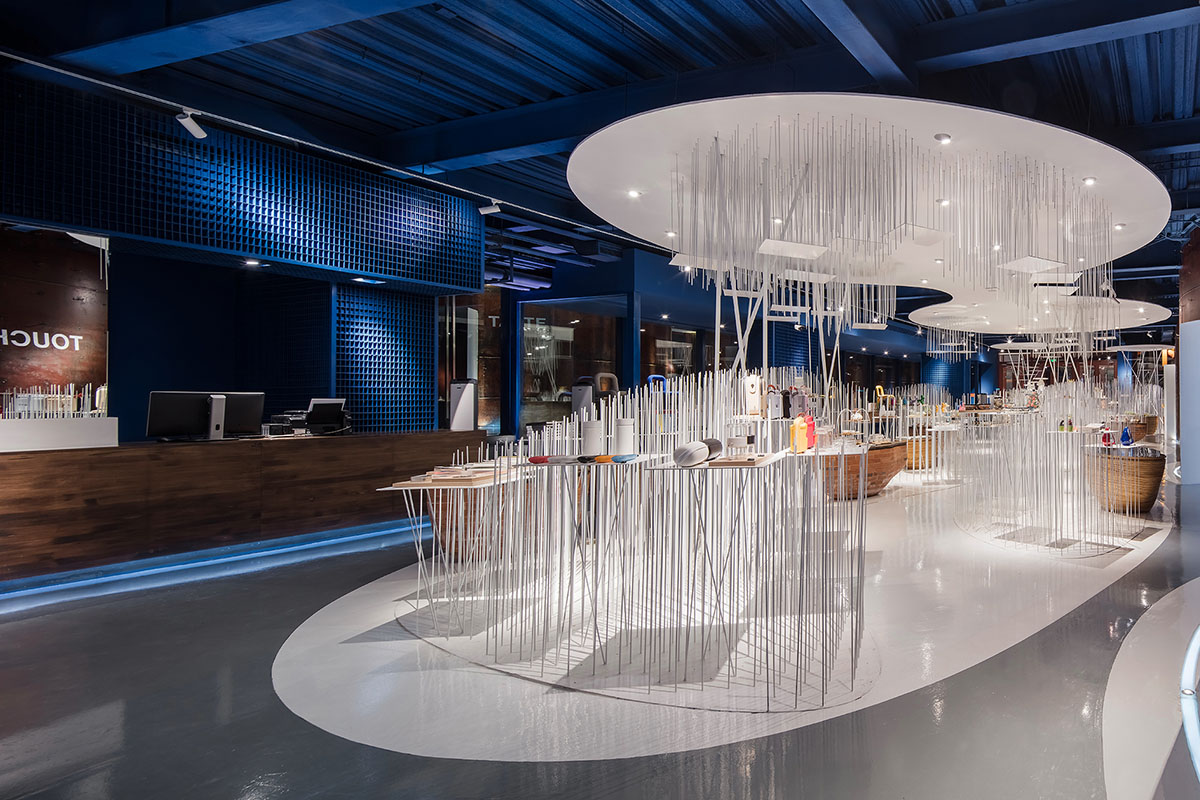
The studio changed placements from original 600 to 1623, so that enough booth can fulfill the installation of the future design, it is not a single horizontal display on the surface, also need rhythmic space to attract customers, replace the value successfully.
In the interior, the architects do not want to reflect a purely objective behavior, the project also seeks the beauty of the product in the space, based on the combination of the theoretical data and practical reasons, the existence of design is to create a physical environment and space services. In order to soften the heavy atmosphere brought by the old industry, the studio designed some furnishings by material which close to daily life, that can make up for the order of the space.
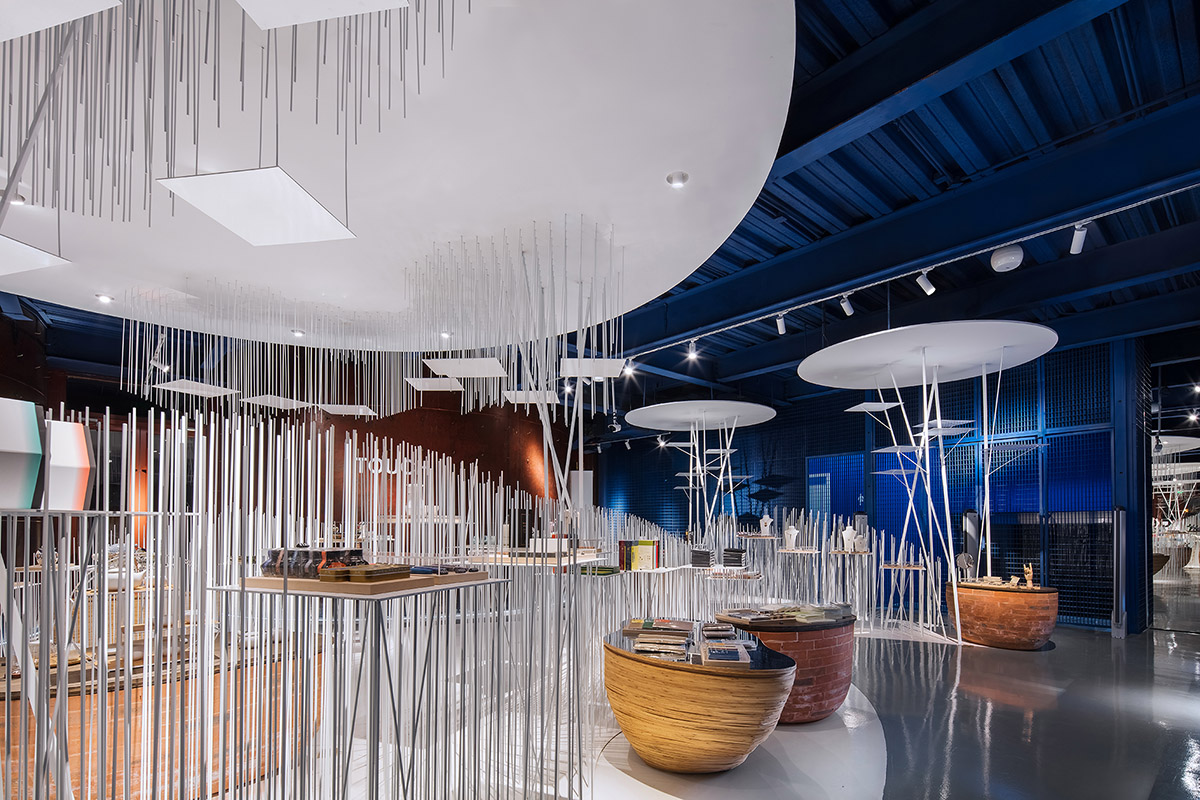
These dispersing and recombinant DNA of the building also allows the behavioral line to make the consumer to walk through the whole project without the visual guidance, which is in line with the business logic.
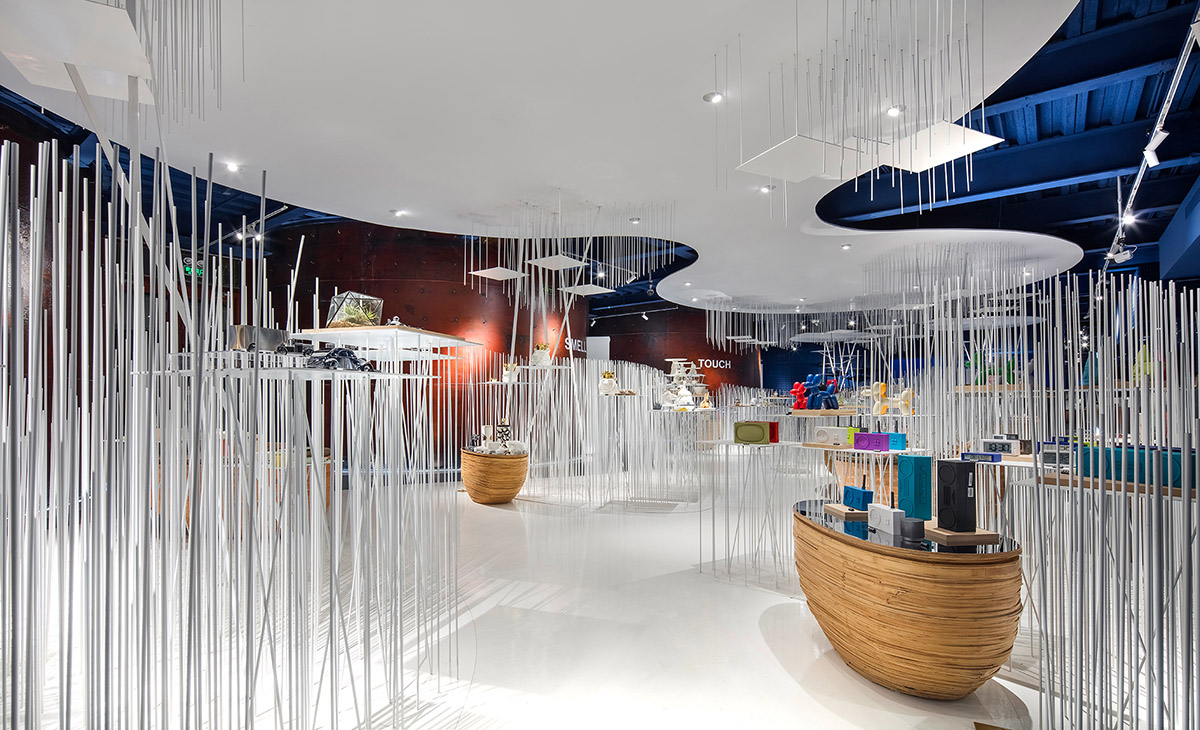
"Color is a trigger for people to feel the space, the pure white central area is the core of the show, it creates a texture contrast with the stressful surround in the dark blue, after leading people to the space by a visual attraction, dividing them into different spaces," added the architects.
Each space has its own independent definition, the architects stretch each space that is connected to main area, and increase its length to form a 'small corridor', which is a perfect transition between the space. CUN Design usually gives references to a good space, what they want to feel is the comfort of the space.
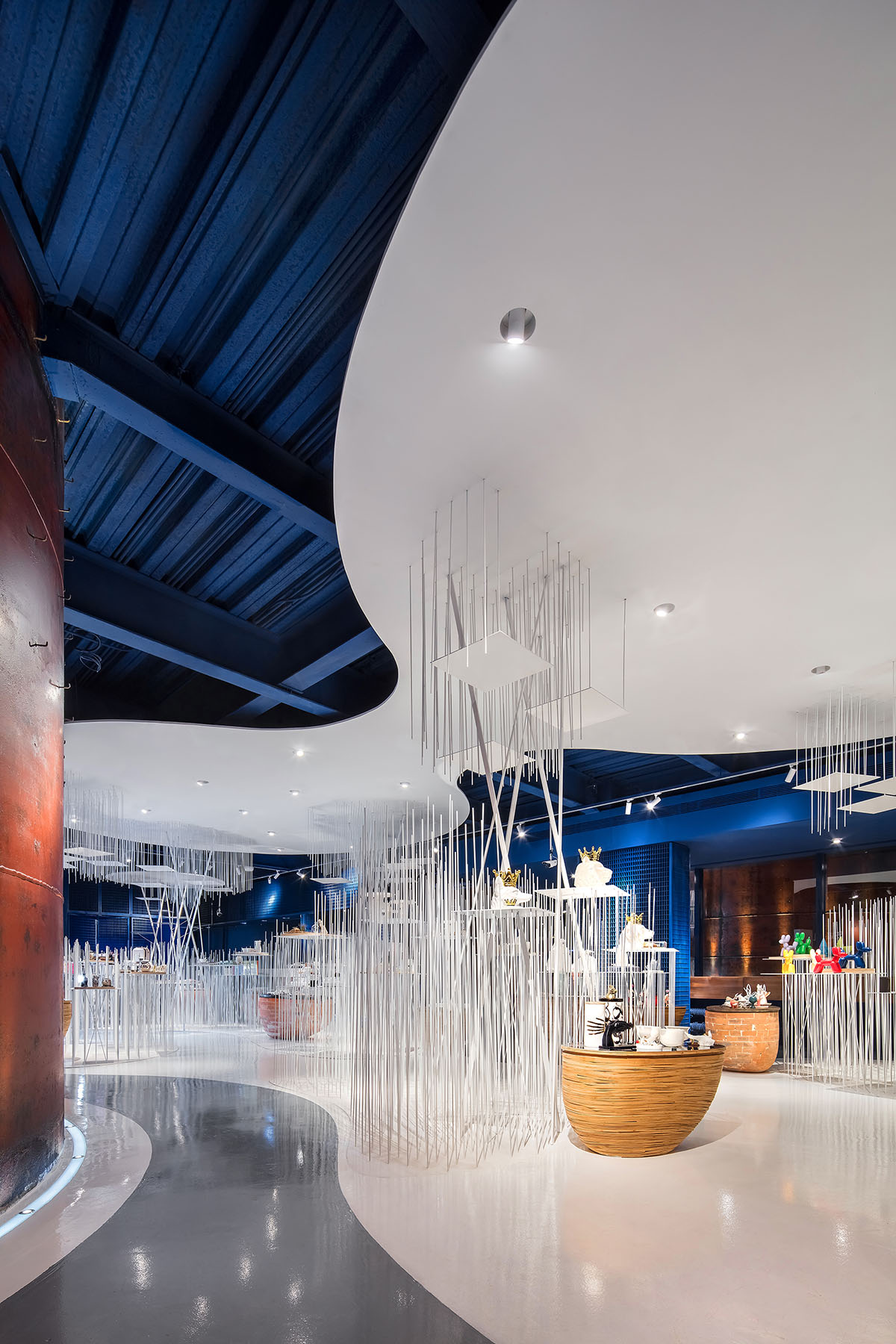
They set a floor-to-ceiling window in the other side of the center area, the memory of the 'new' and the 'old' are divided by this glass window line, but also blend in a same environment.
The studio creates an original but modified space just to remind its visitors the original factory in the past. The corridor outside becomes a fashion runway out side the glass window. Fashion is a changeful set as well as the trend, the product of interior space should make a connection with the outside, make enough and affect the consumption desire of people.
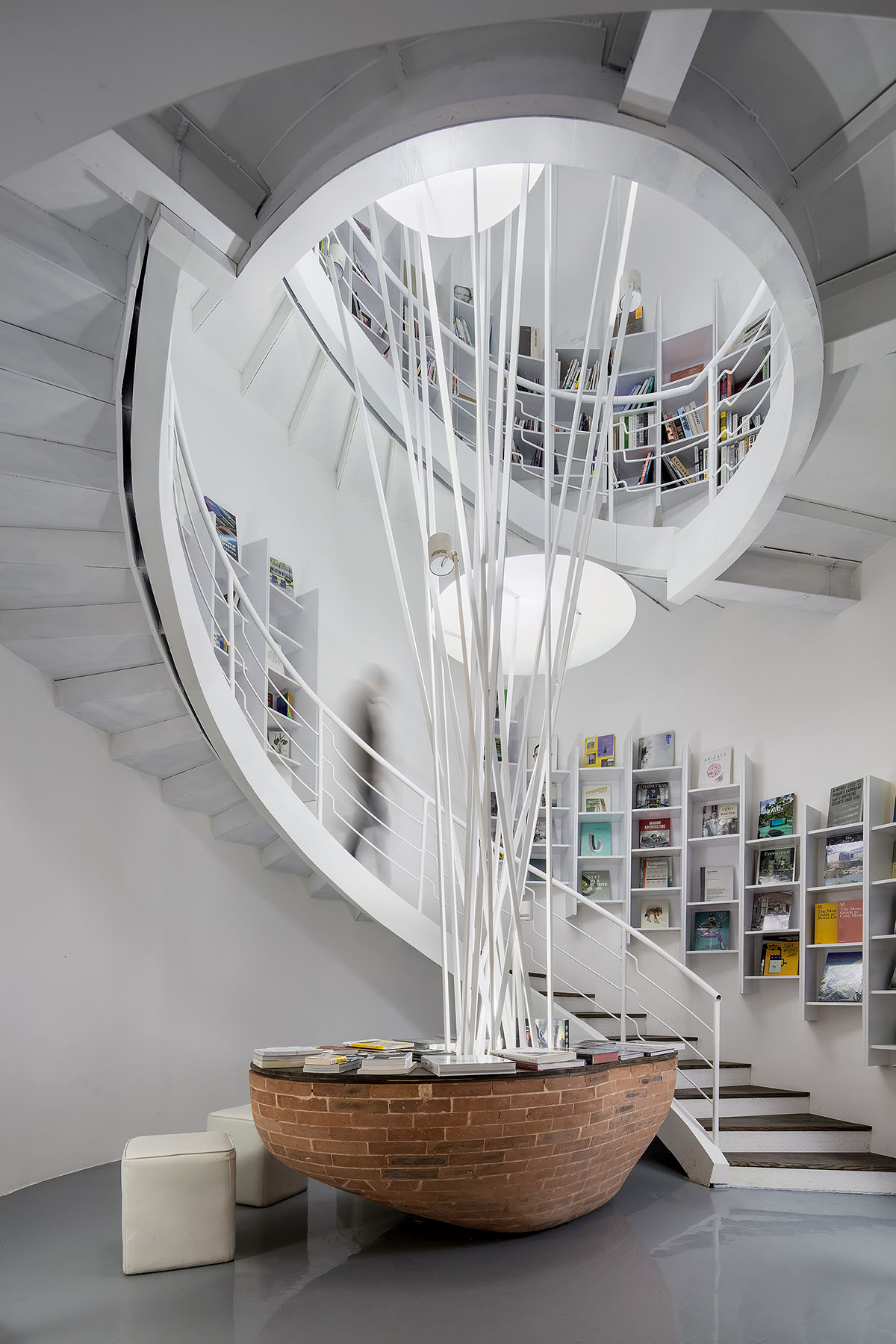
"There is a limitation to capacity of a space, if the designer did too much, it can make the place into a crowd and hollowness atmosphere. To grasp the requirement of the space scale, there is a certain ‘buffer space’ between the existence of the space and the original structure," detailed CUN Design.
Expounding the relationship between people, objects, activities, noise, colors and patterns, etc. It also elaborates the aesthetic value that designer gave to it.
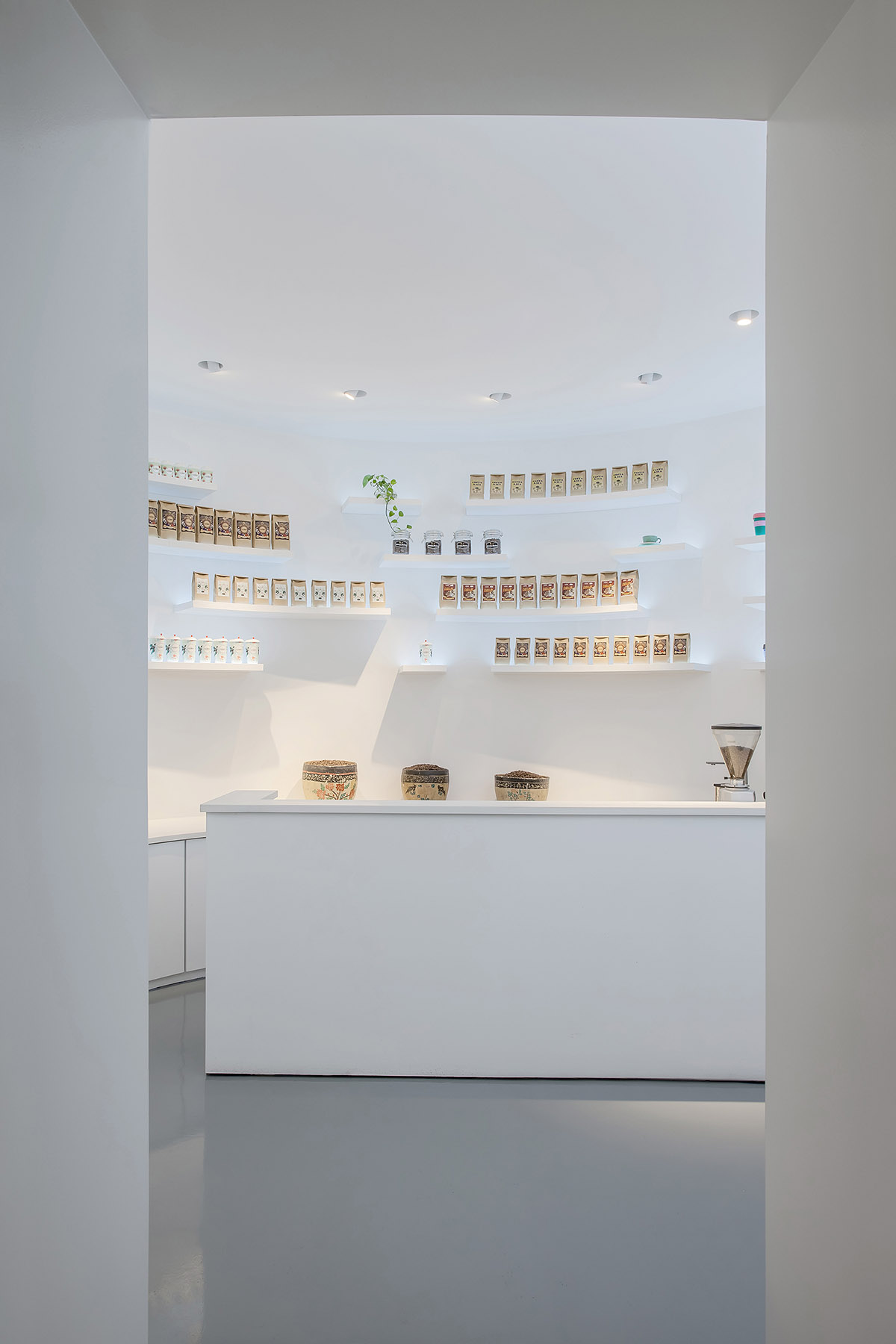
"Facing to transformation of the space, as for us is to make something new on the original buildings. In addition to the building itself, it’s also a symbiotic entity of human environment," added the architects.
"We respect the sign of time, solve the current requirements at the same time. Then combination between the new and old is more like old buildings in another pose in our daily life."
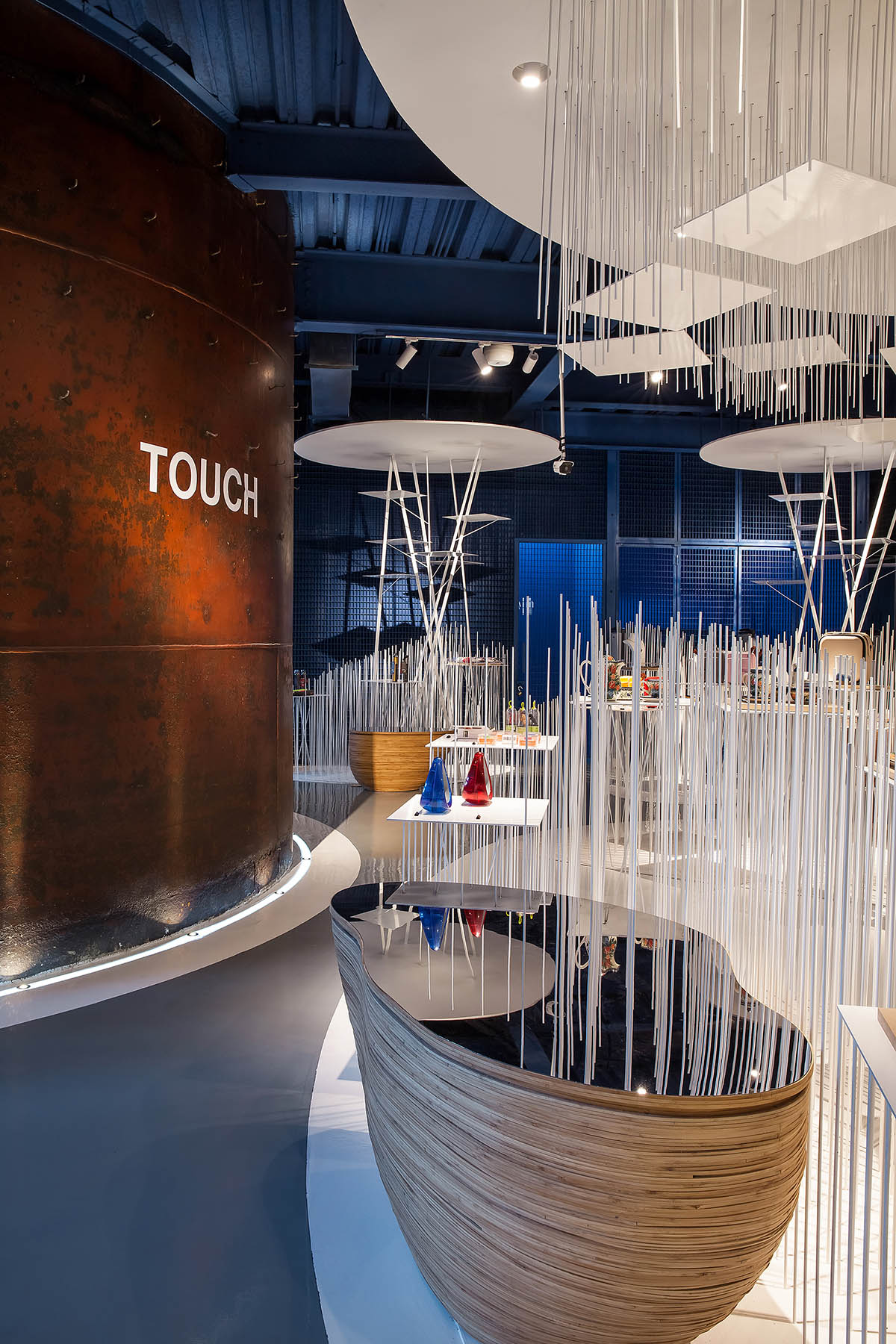
"Nowadays, the 'old factory' has been abandoned as a social 'burden', or we can say it has been dismantled and gradually disappeared in the city’s memory. We no longer to hear the blasting noise by gear juki, see the familiar ‘bulk carrier’ moving between factory and home. We no longer want to see the scene of the lively crowd."
"As if it's the microcosm of Chinese 80's society that remains the good memories of our childhood. As the city takes a re-understanding to the industrial heritage, culture and social value, it’s the time to consider new options of the old factory."
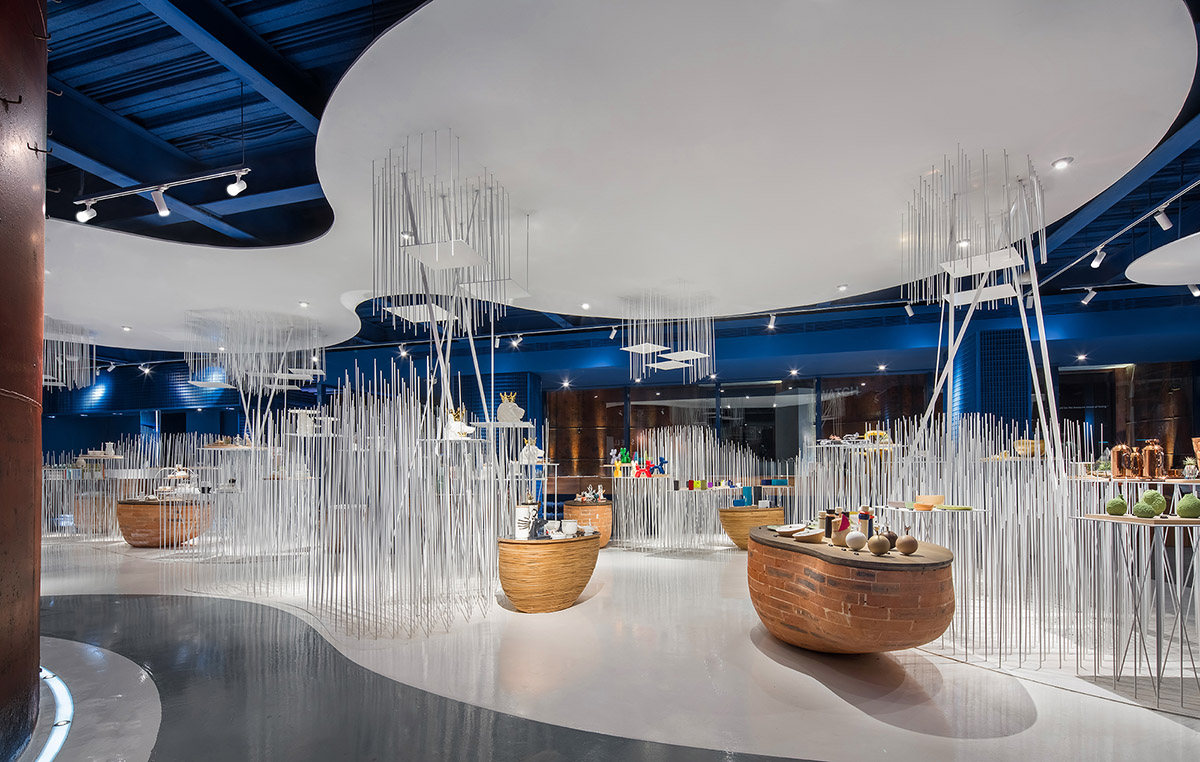
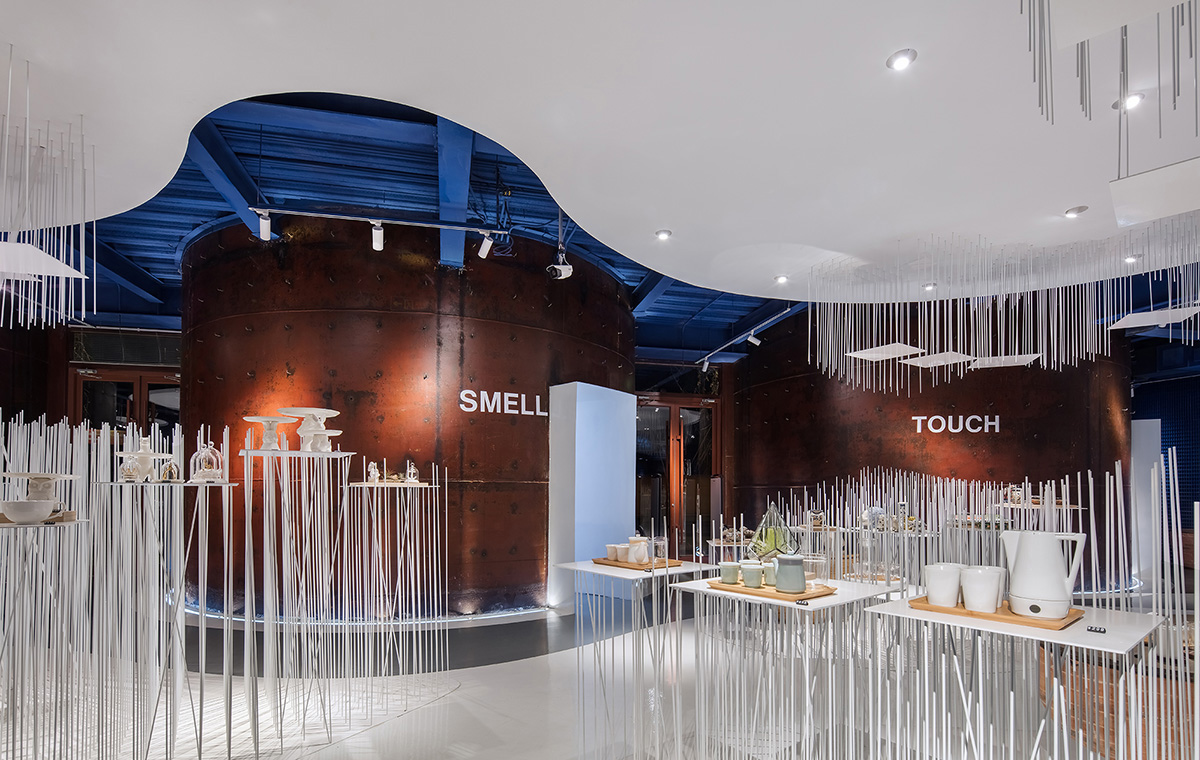
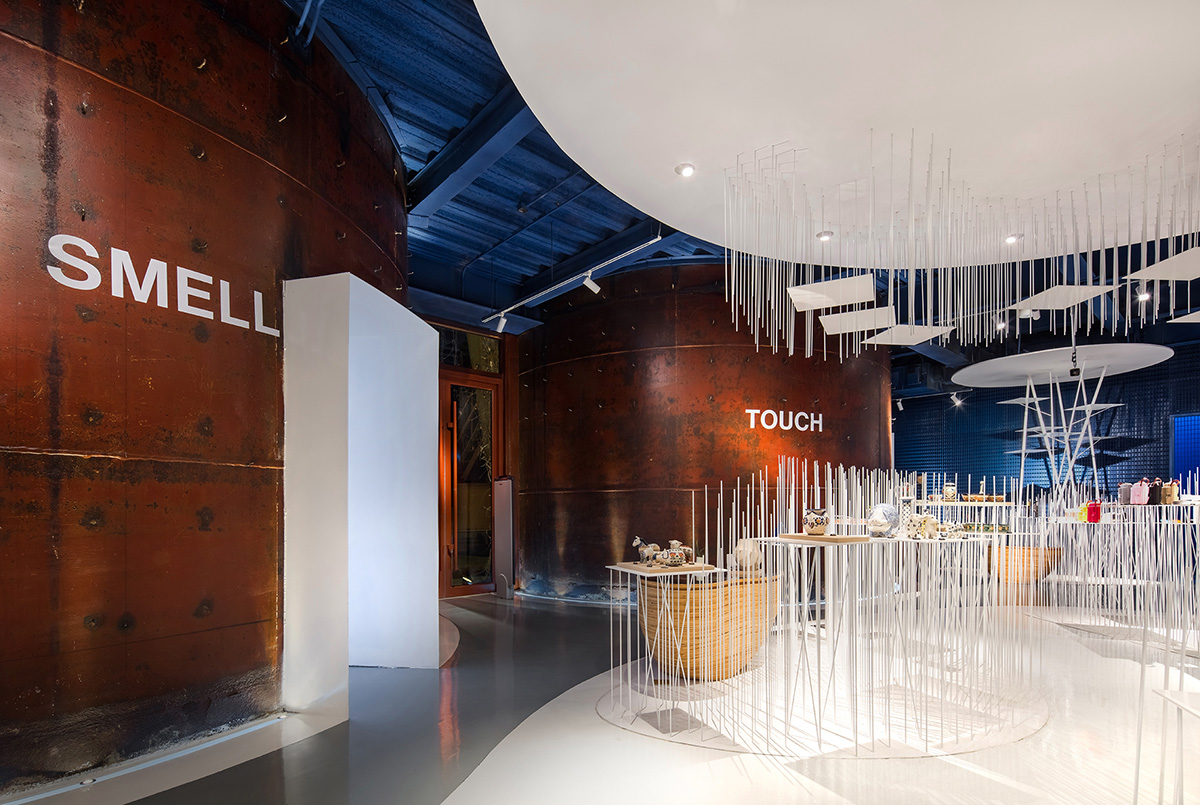
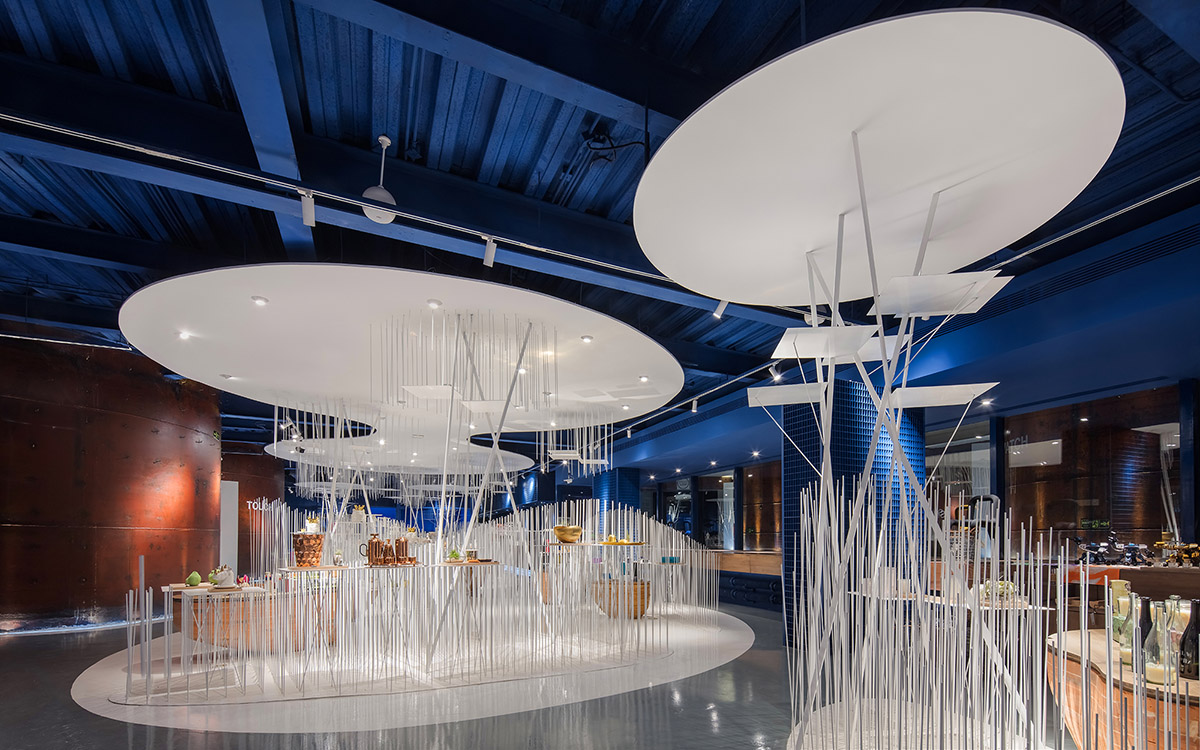
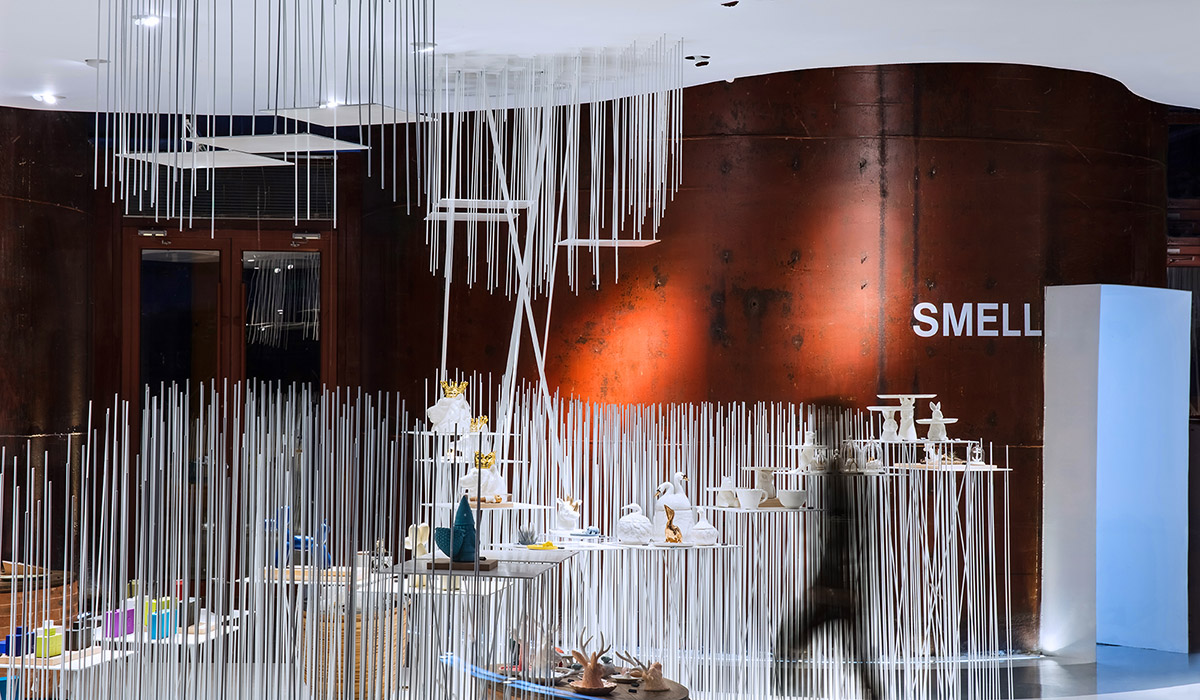
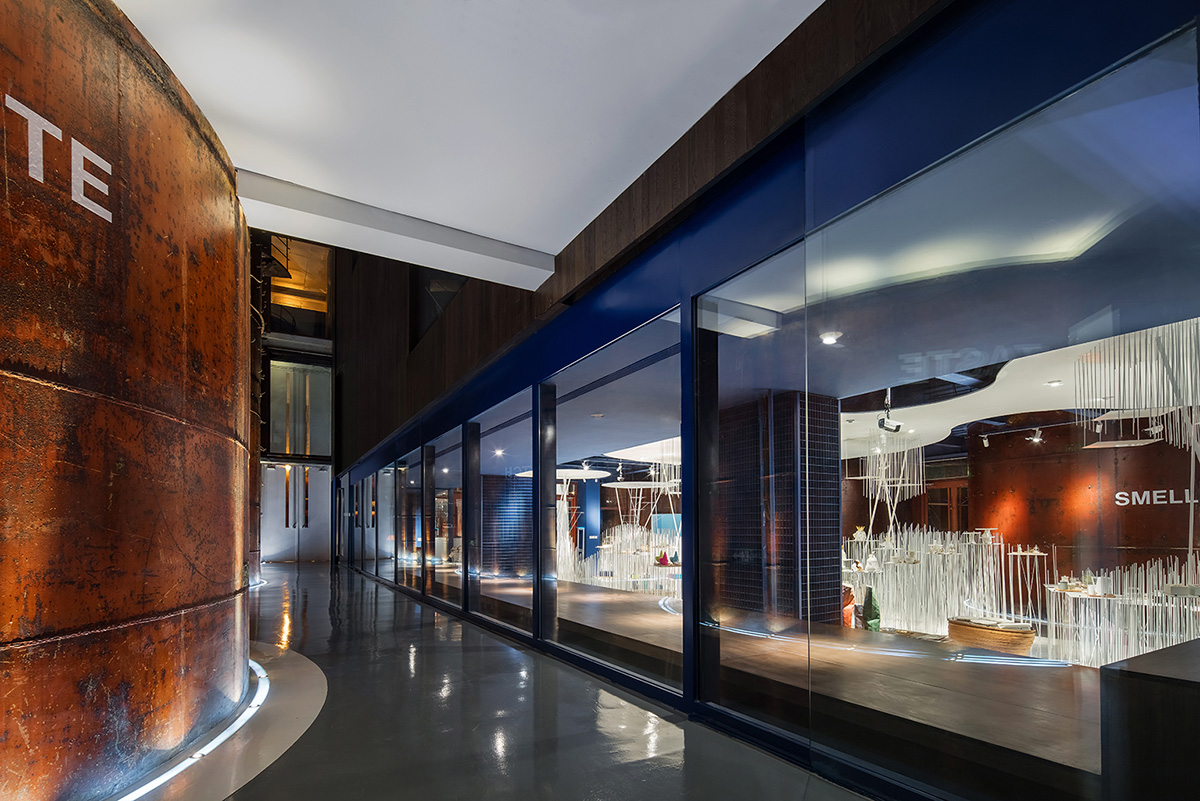

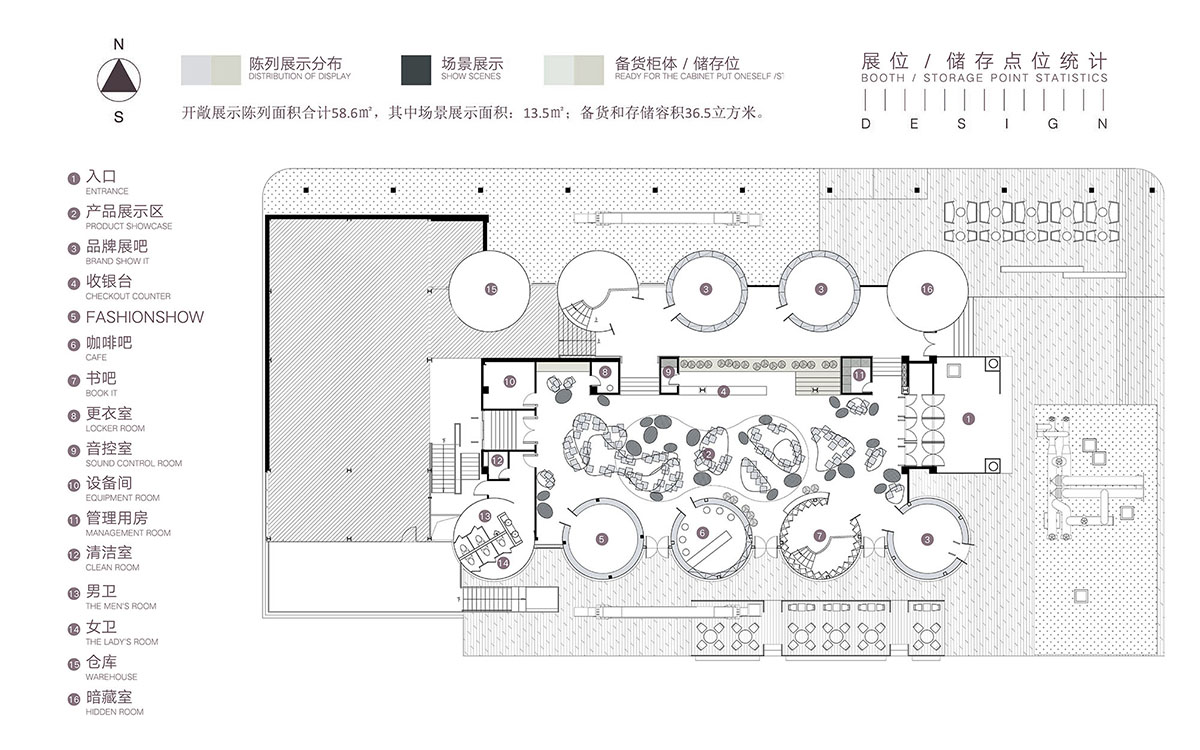
Booth layout
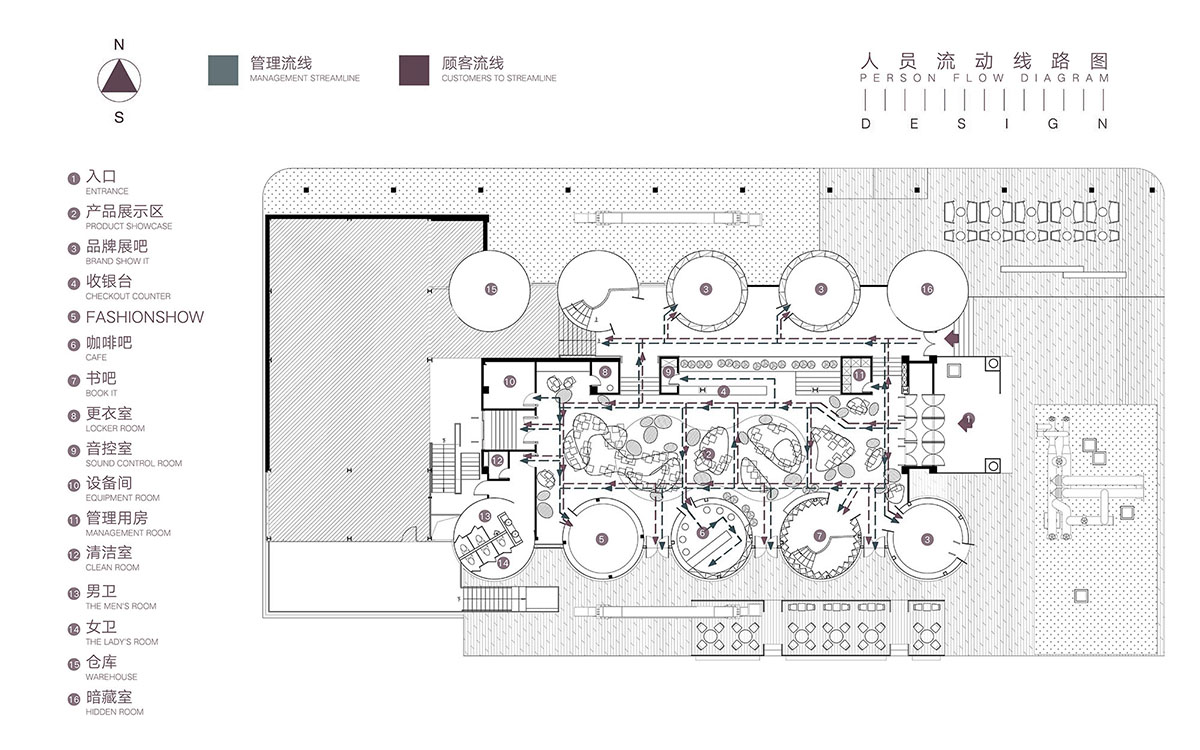
People flow diagram
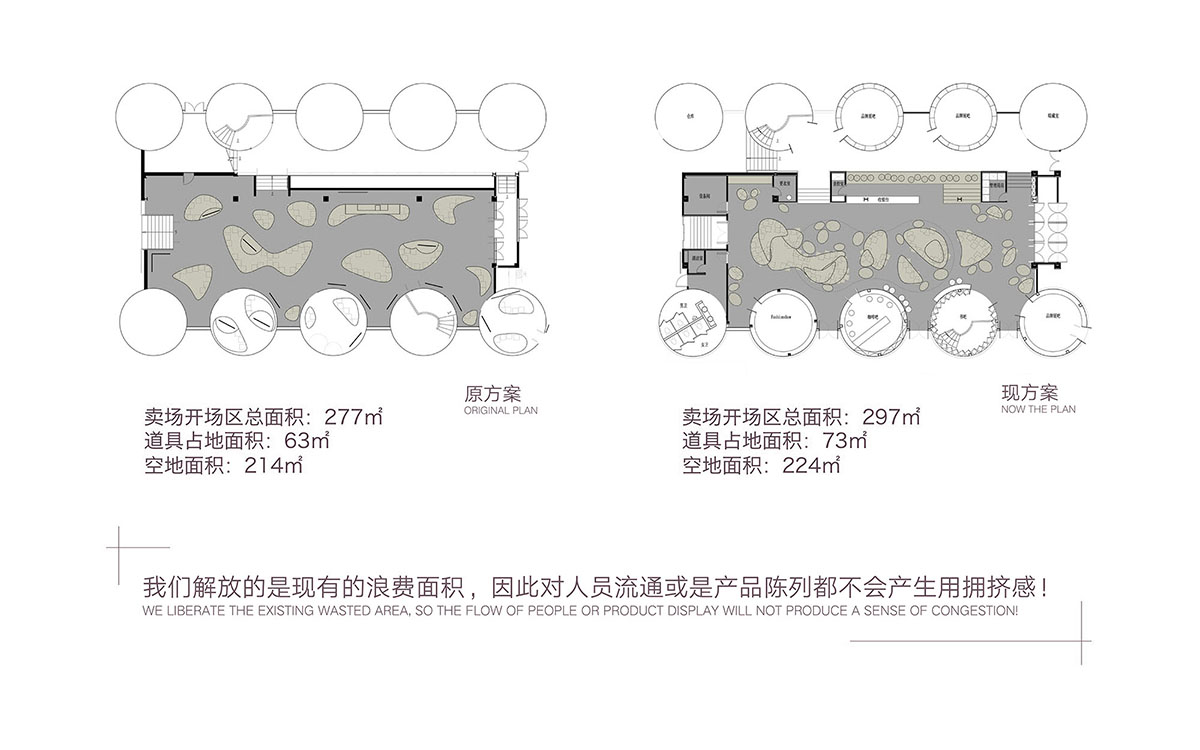
Original and current plan
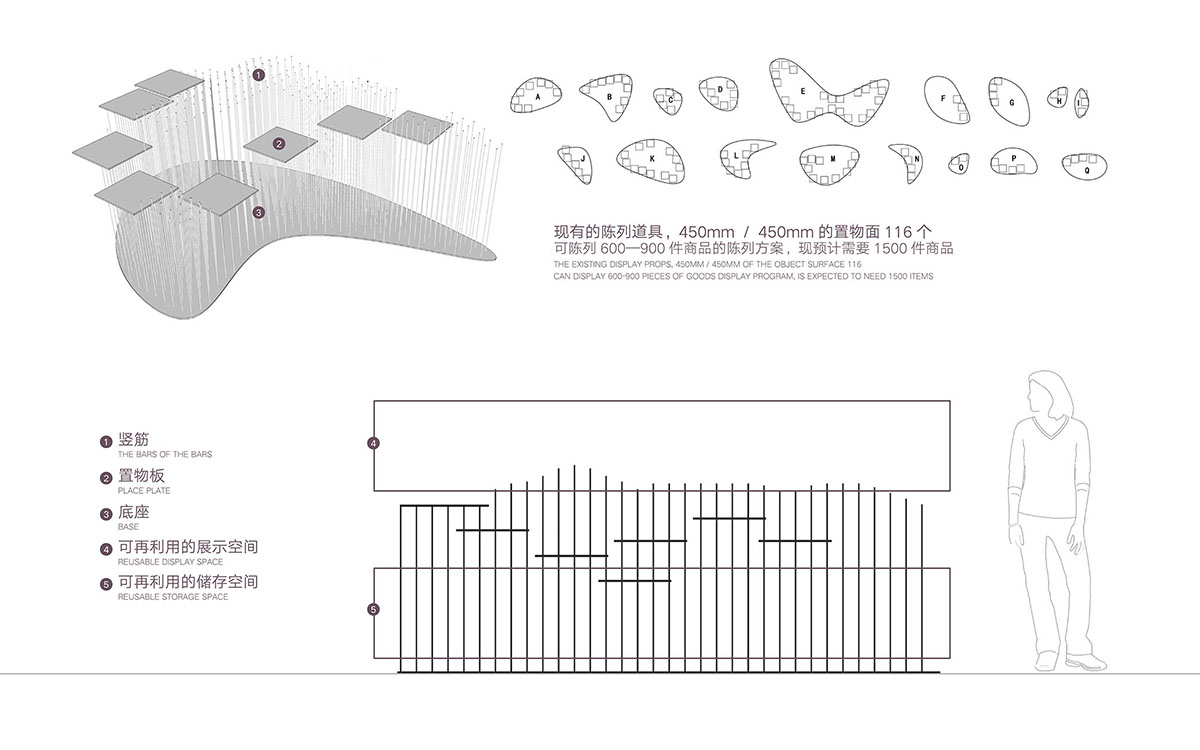
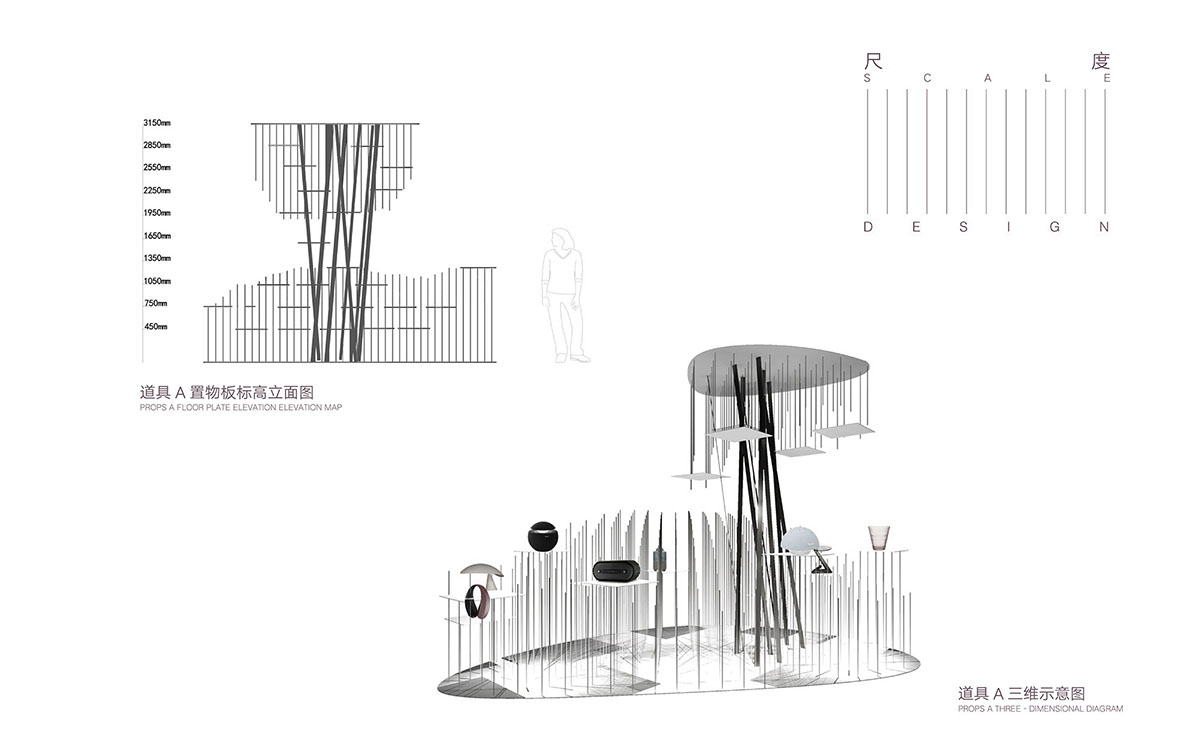
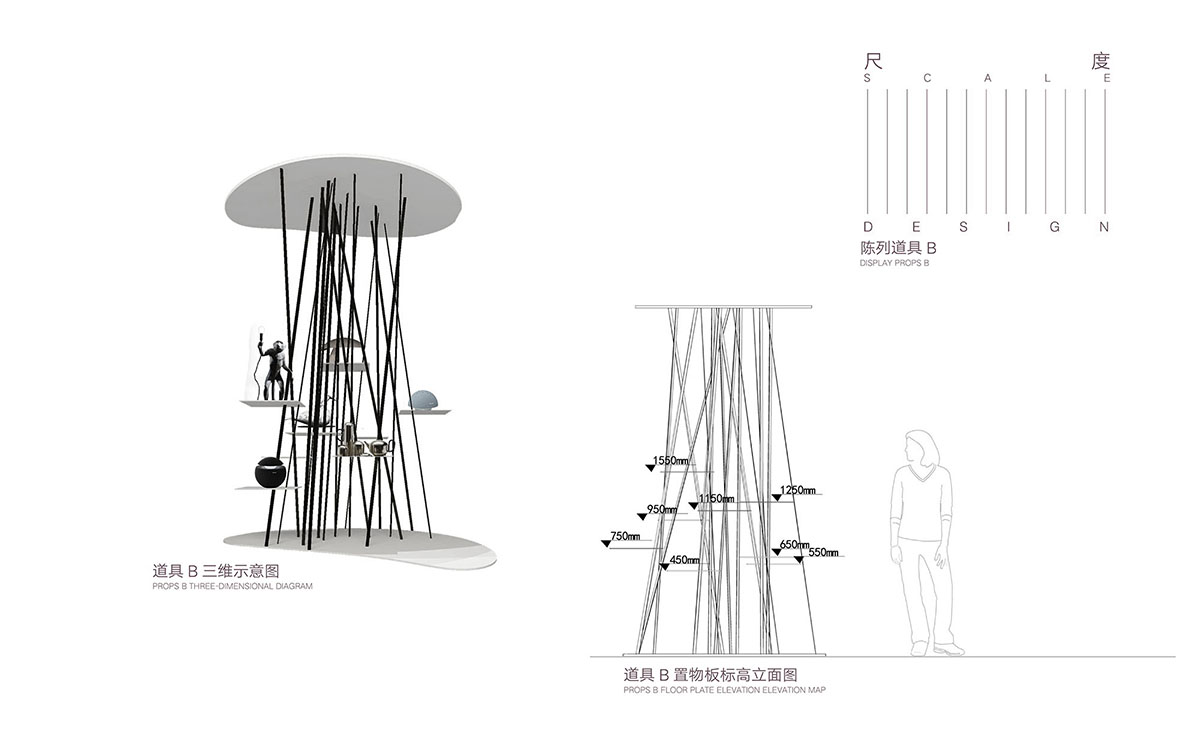
Project facts
Project: 751 Fashion Buyer Shop
Design: CUN Design
Designer: CUI Shu
Location: Fashion Echo, 751D·park, Beijing, China
Area: 430m2
Completion time: September, 2017
All images © WANG Ting andWANG Jin
> via CUN Design
